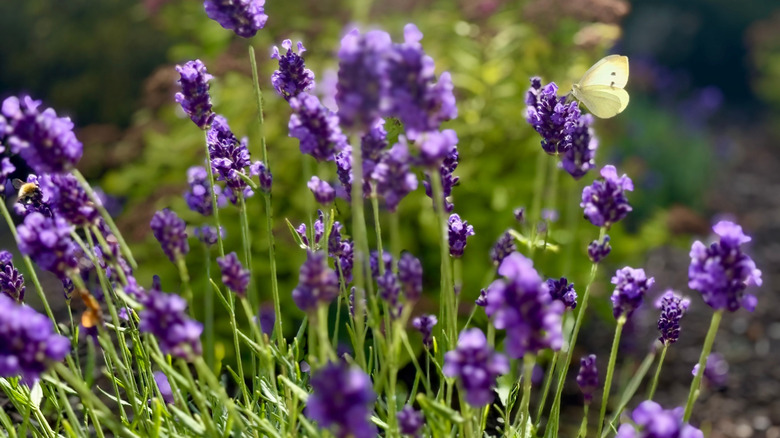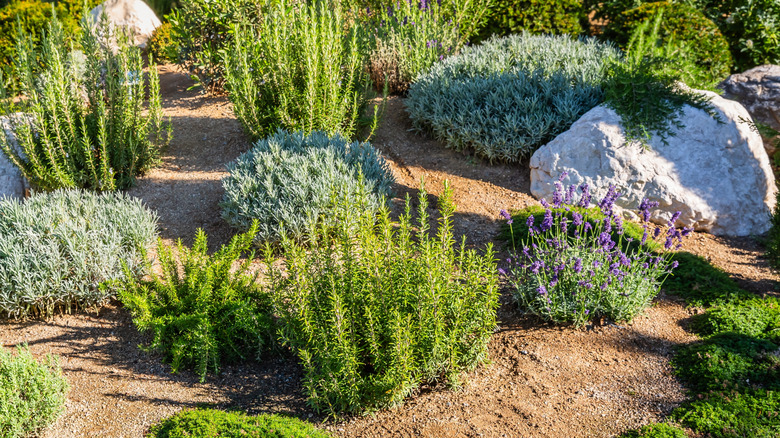The Mulching Tip That Can Help Lavender Plants Thrive
Have you ever noticed that the suggestion for "well-drained soil" appears in instructions for the vast majority of plants? Lavender (Lavandula angustifolia) is a plant for which this instruction must be taken very seriously because wet roots are the number one cause of lavender death. That's why dry, sandy loam soil is best for this delightful, purple-flowering plant. Lavender benefits from light mulching, but many organic materials retain significant moisture, risking root health. You can contribute to good drainage for lavender by providing mulch with inorganic materials that help the drainage process and provide additional benefits.
Lavender growers mention sand, gravel, and crushed seashells or oyster shells as ideal mulching materials for these lovely, fragrant plants. These materials help ensure a dry crown for the plant and prevent a build-up of excess moisture that could be lethal to its roots. They can also form an effective barrier to weeds. When they are light in color, these inorganic materials can maintain the warmth that lavender favors by reflecting light directly onto the plant. You need not continually replace inorganic mulch because it doesn't break down the way organic materials do. Gravel is also touted as a simple addition to the soil that will encourage more blooms on your lavender plants.
Use inorganic mulch materials to keep lavender roots dry
This inorganic mulch approach reflects the same principle behind the easy soil trick that will keep your lavender plants happy and healthy, which suggests providing drainage using crushed nut shells or pine needles (be careful with pine needles as they can eventually add too much alkalinity to the soil). Looking at specifics, pea gravel, crushed gravel, or even small pebbles are recommended gravel types. Limestone gravel is an option that also increases soil pH to the level lavender favors. Seashells provide lavender with calcium support. Sand should be coarse, not fine, which would compact the soil.
Speaking of compacting, be aware of one huge caveat about using sand or gravel with clay soil. If you have clay soil, do not use these inorganic materials as they are likely to make drainage issues worse and can even turn the soil to concrete. Whichever materials you choose, do not apply a thick mulch layer that could result in excessive moisture retention. Understanding the best mulching materials is just one thing you need to know before planting lavender.

